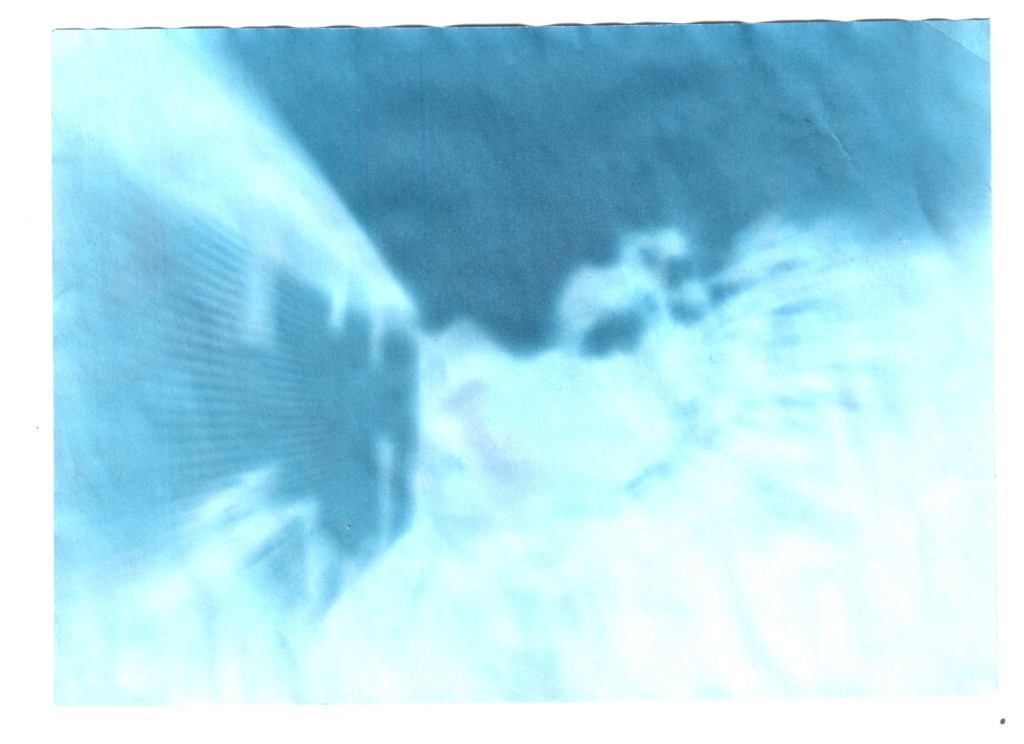Tagged “science”
- Tropospheric ducting - part 3
-
Cyanotype photography 2
Notes to someone who wants to do this:
-
I modified the lens to be mounted to a toilet paper tube, so I could focus the image. I also cut a hole in the back of the box and taped some waxed paper over the hole so I could see if the image was in focus before taping the sunpaper to the back.
-
Make sure your hands are dry before touching the sunpaper! You will remove the chemical if you do get it wet.
-
You need bright sunlight for this to work. I just did a 1 1/2 hour exposure in bright (but cloudy) weather, and the image was severely underexposed.
-
Lemon juice doesn't seem to make that big a difference to the end colors.
-
-
Cyanotype photography
I have recently begun experimenting with direct cyanotype photgraphy. Cyanotype paper is more commonly known as 'sunpaper', 'sun paper', or something similar. Basically, the chemicals on the paper react to the ultraviolet light from the sun. After a few hours of exposure, you wash the paper off in water (or water and lemon juice, as I did), and your results are made permanent.

All I did was take a shoe box, cut a small hole in the lid, tape a plastic magnifying glass to it, tape a piece of sunpaper to the bottom of the shoe box, and sit it out in the sun. I got lucky that the focal length of the magnifying glass focused the image to the back of the box almost perfectly. I might try making a SLR type camera next.
-
Life on Europa?
This blog describes that the evidence for life on Europa, the moon of Jupiter, is mounting.
-
Distributed earthquake sensors
This project uses accelerometers in laptops to detect and report back earthquakes. It appears that they only detect earthquakes above 4.0, but it sounds like this would be a way to study earthquake propagation and potentially provide an early warning system.
-
Online Microscope
Here's an online microscope. Pretty cool stuff to look at, including pacreatic islets.
See all tags.
